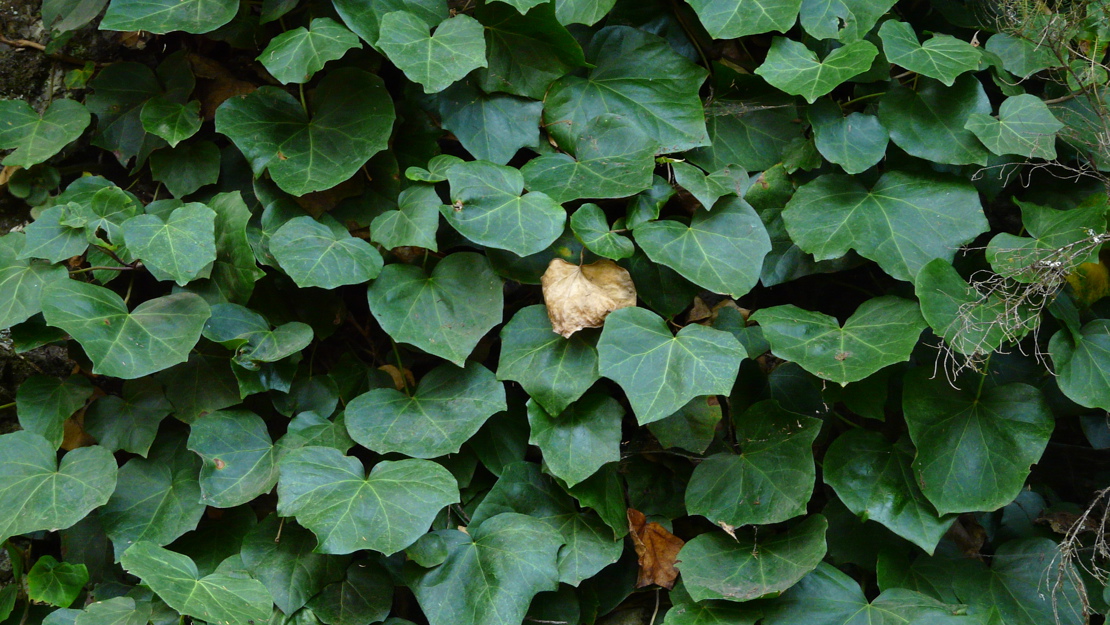Hedera helix subsp. canariensis
Canary Island ivy
Family: Araliaceae
Origin: Eurasia

Regional Pest Management Plan (RPMP) status
- Whole region — Sustained control
- Hauraki Gulf Controlled Area Notice pest
General description
Evergreen perennial root-climbing liana. Leaves are triple-lobed, palmate and usually variegated. Flowers are yellow/green and borne in spherical umbels in August – December. Berries are deep purple black when ripe and are borne March – May.
What you need to know
To help protect our environment, from 1 September 2022, you:
- will not be allowed to breed, distribute, release or sell Canary Island ivy within the Auckland region.
- will not be allowed to plant Canary Island ivy within the Auckland region, unless you are transferring an existing plant on your land to another location within the boundaries of the same property.
- must destroy any Canary Island ivy on land that you occupy if it has been planted in breach of the above rules and you are directed to do so by an authorised person.
Habitats
Native forest, roadsides.
Dispersal
Seed dispersed by birds. Vegetative spread locally. Human-mediated dispersal through dumping of garden waste.
Impact on environment
Forms dense mats, preventing native regeneration, affecting ground invertebrate communities and providing habitat for rodents. Can cause contact dermatitis.
Control
Site Management
Cut and pull vines away from desirable trees and native plants before foliar spraying. Follow up treated areas 3 times per year. Encourage natural regeneration of native plants or replant treated areas where possible after 2-3 treatments to establish dense ground cover and minimise reinvasion.
Recommended approaches
Physical control
Method: Dig out.
Plant parts requiring disposal: All parts.
Disposal options: Compost stems and roots in a composting weed bag or remove to greenwaste or landfill if practical.
Biocontrol
Biocontrol is currently not available for this species.
Community agrichemical control recommendations
No qualifications: Cut stump and paste freshly cut base of stems with metsulfuron gel.
Basic Growsafe certified: Cut stump and spray freshly cut base with 2g metsulfuron-methyl per 1 L of water.
Certified Handler/Experienced agrichemical user: Foliar spray with 5g metsulfuron-methyl per 10L of water and 20ml penetrant.
Caution: When using any herbicide or pesticide please read the label thoroughly to ensure that all instructions and safety requirements are followed.



